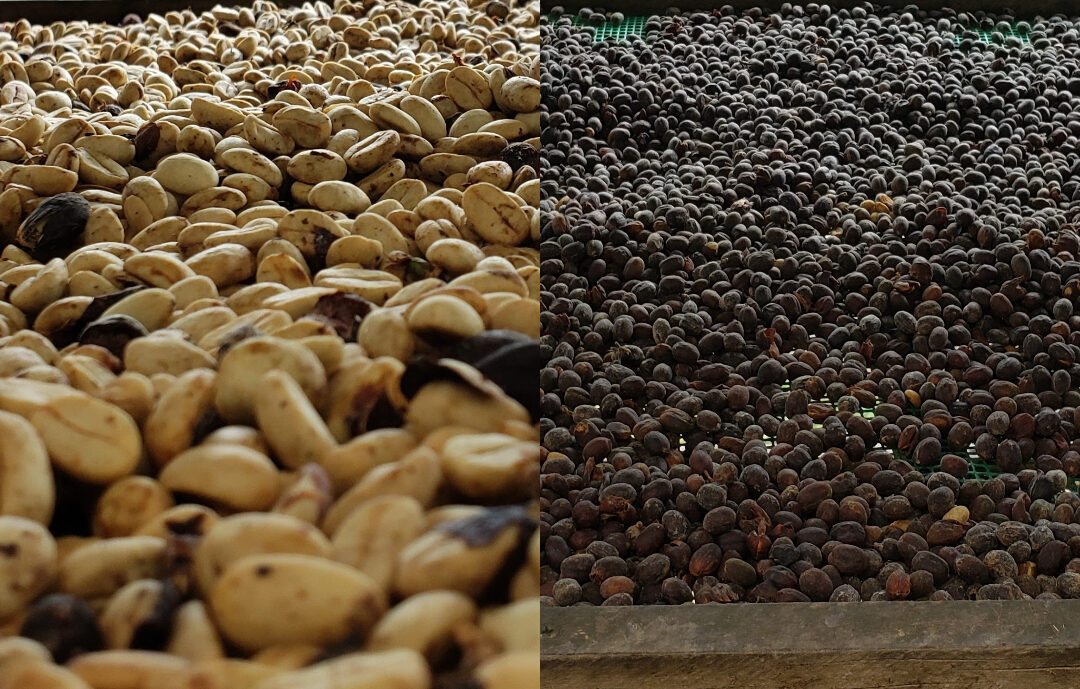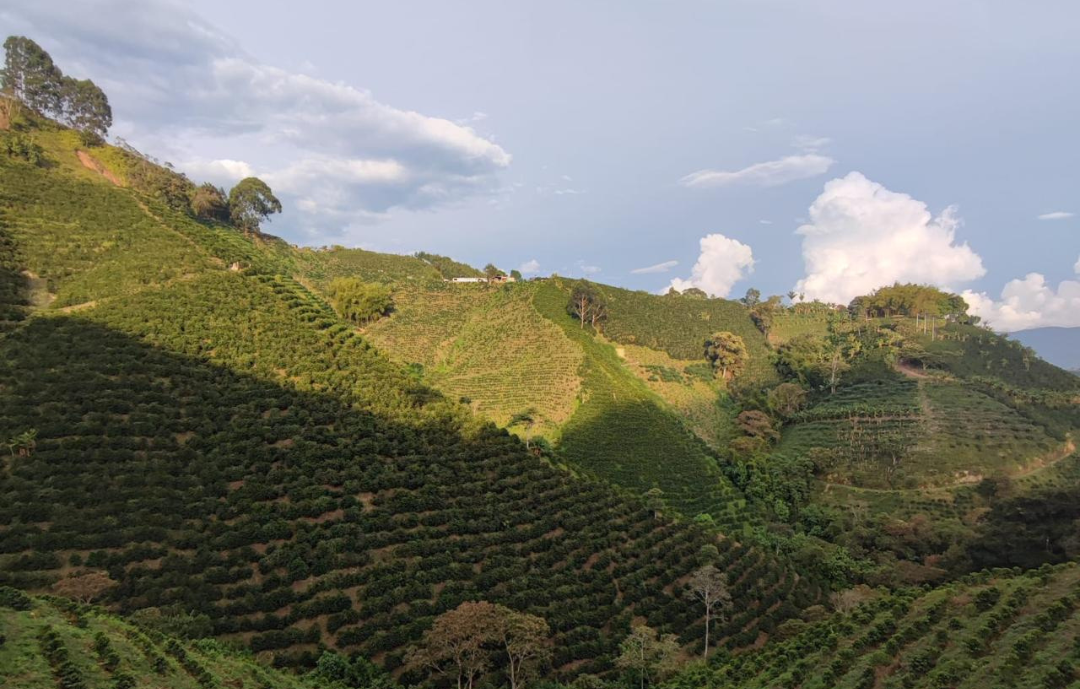Tracing the Coffee Trails of Colombia
My journey began in southern Huila with a demanding ten-hour road trip that wound through the imposing mountains of the Eastern and Central Cordilleras of the Colombian Andes.
The first official day of the expedition started in Pereira, Risaralda, the heart of Colombia’s Coffee Region and a place rich in coffee-growing tradition. Early that morning, I was greeted by my host, Carlos, and together we set off for Chinchiná, Caldas, a drive of about an hour.
The Encounter with Tradition: Don Luis
In Chinchiná, Don Luis and his family were waiting for us, people who have coffee rooted in their essence. With more than 40 years of experience, Don Luis is a pillar of the sector, possessing deep knowledge and an inexhaustible passion for his work. After exchanging introductions and sharing a mandatory cup of freshly brewed coffee, we prepared to explore the emblematic landscape.
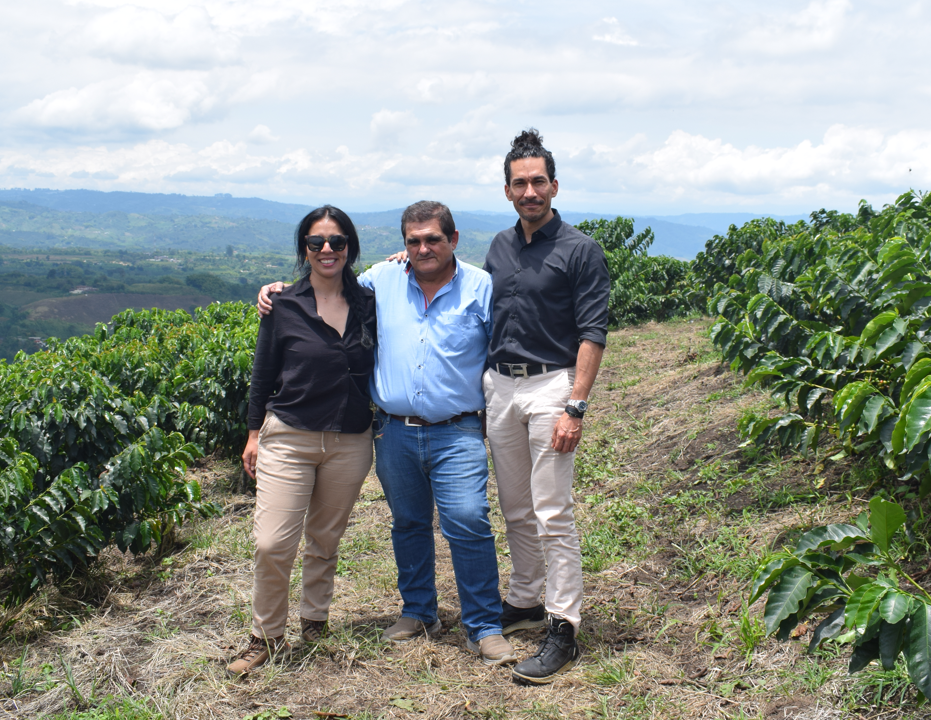
The first impression upon touring the area is one of awe. Vast farms stretch out with meticulously organized crops. The landscape is a sea of green, dominated by coffee, while banana trees appear here and there, serving the vital function of providing shade for the bushes.

Our visit coincided with harvest season, giving us the chance to fully immerse ourselves in the activity. We shared the space with more than 30 pickers who, at midday, gathered to weigh the coffee harvested that morning. In this region, as in much of Colombia, remuneration is based on quantity, so every bean collected is essential.
Beyond the weighing, this midday gathering is also lunchtime. Several women arrive with large pots to serve the traditional Colombian meal: soup, rice, beans, meat, salad, potatoes, and plantains, accompanied by refreshing lemonade and, to finish, an invigorating cup of coffee. This hearty meal provides the energy needed to carry through the rest of the day.
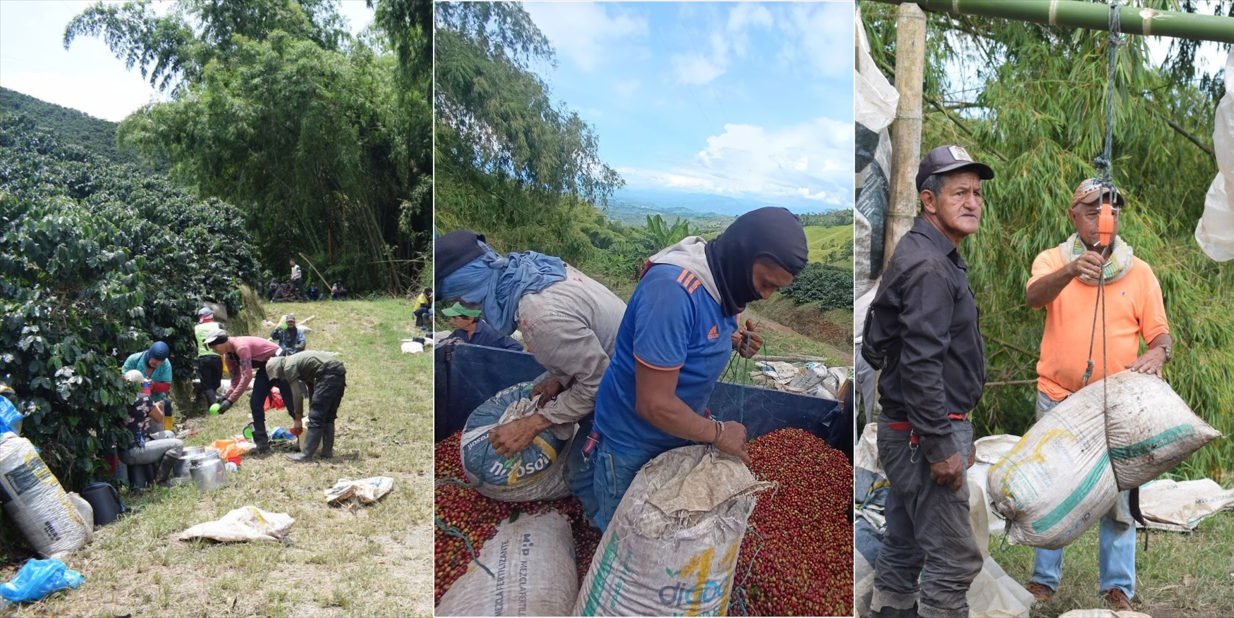
An Innovation for Worker Well-being
A particularly interesting detail shared by Don Luis illustrates how workers’ quality of life can be positively affected. In the middle of the harvest, it was common for pickers to have conflicts by accidentally crossing into a neighboring row, which often led to disputes because payment depended on the amount harvested.
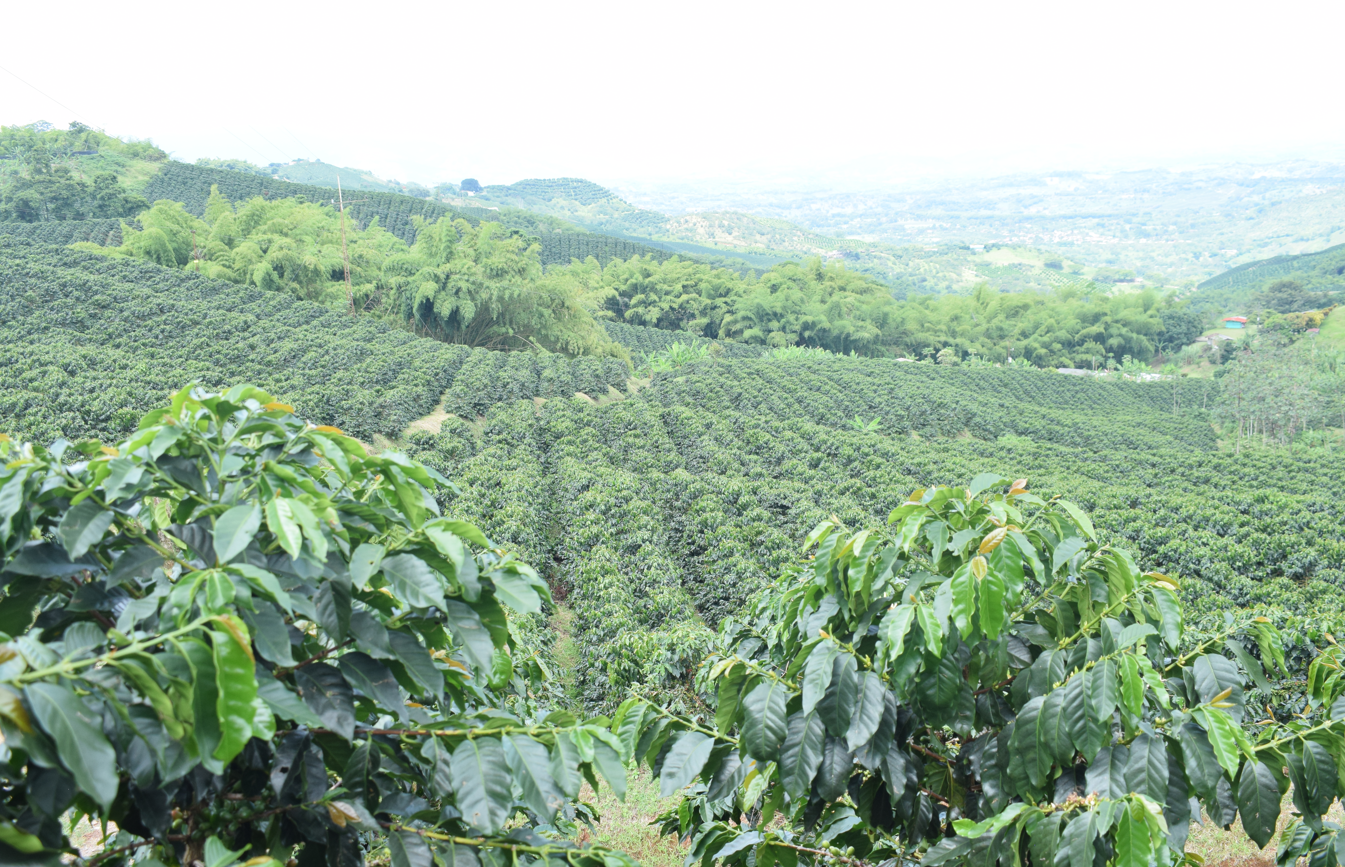
Closing Reflections: The Future of Coffee Growing in Chinchiná
As we toured the plantations under the afternoon sun, the conversation turned to the challenges facing coffee growing in Chinchiná. This municipality, historically a pillar of national coffee production and synonymous with high-quality coffee, has seen a gradual decline. Volatile international prices, rising production costs, and the aging of coffee growers have all eroded the sector’s profitability and vitality.
The discussion revealed a paradox. Despite being the birthplace of institutions such as the Buencafé freeze-dried coffee factory, the Descafecol plant, and the Cenicafé research center, Chinchiná struggles to preserve a legacy spanning more than a century. Tradition, while invaluable, is not enough to ensure future viability.
This suggests that revitalizing the countryside depends on the new generation. But this is more than a generational change; it is a paradigm shift. The task falls to young people who can complement traditional knowledge with entrepreneurial spirit, innovation, and a global vision.
Day 2
Immersion in Manizales: On the Trail of Specialty Coffee
My second day of travel began very early. I left my hotel in Pereira around 6:30 a.m. to catch a bus to Manizales, the capital of the department of Caldas. After a drive of approximately two hours, I was greeted by Diana Lucía and María Camila, a mother-daughter team at the heart of their family coffee business.
Their company is a striking example of effort and unity. Don Orlando Arteaga, Diana’s husband and María Camila’s father, is a master roaster with 20 years of experience and leads the operation. Diana Lucía manages sales and logistics, while María Camila oversees an ambitious specialty green coffee project. Together, they have built not only a successful business but also a strong and cohesive family.
The Challenge of La Leonora Farm
Once I was picked up, we set off for our first stop: La Leonora Farm, located in the Cuchilla del Salado area of Manizales. We left the vehicle in the village because the access road was truly daunting, with a slope so steep that only a local like our host, Daniel Castaño, would dare to drive it.
After a short drive, we were met with a spectacular view dominated by a traditional drying area known as Casa Elba. This system is disappearing, as it is built over houses with a sliding roof that allows both the coffee and the house to be covered at night or in case of rain. We also visited the farm’s original house, a 100-year-old architectural gem that the family has carefully preserved and restored.

Daniel Castaño: The New Generation of Coffee Growers
Daniel Castaño is the third generation of his family dedicated to coffee and is now leading the transition to specialty coffee production. During our tour of the farm, he showed us how the plants are being renewed, introducing new high-quality varieties, such as Bourbons. At the same time, he has preserved some of the older coffee trees in the same lots, ensuring that their production supports the next generation while the new plants become productive.
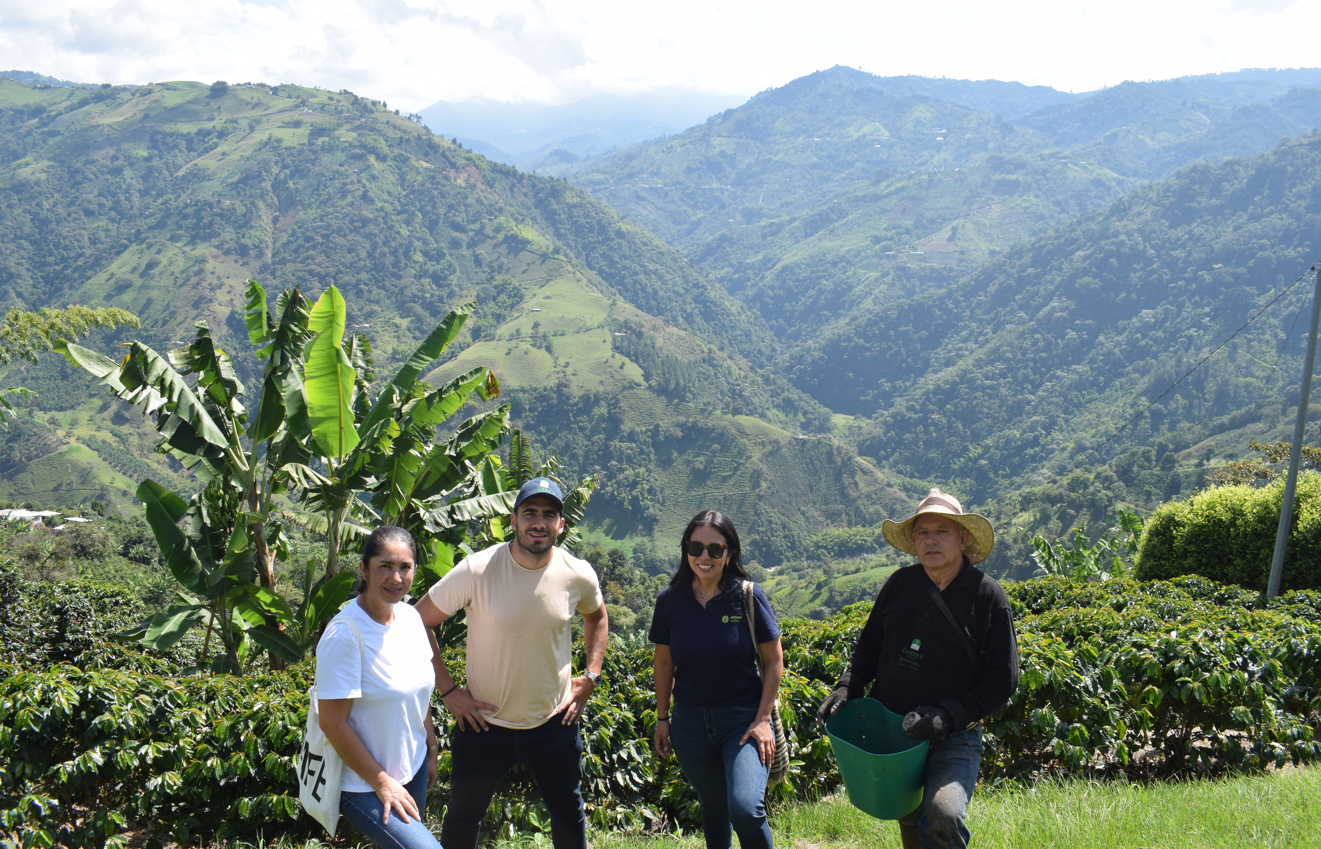

We continued our tour through coffee-growing land.
After a mandatory stop for lunch to recharge our batteries, we resumed our journey to the Llanitos area in the municipality of Villa María, just over an hour away. There, two farms awaited us, located opposite each other amidst the majestic coffee landscape: Finca La Gaviota and Finca Blanca Luz, owned by Don Ulises Valero and his son Andrés.

Diversity and Sustainability in Cultivation
During the visit, we toured the coffee plantations. Unlike most in the region, these farms stood out for their shade trees and a rich variety of fruit trees including lemons, oranges, tangerines, avocados, and bananas. This practice, uncommon in the area, not only promotes biodiversity but also prevents soil erosion and ensures a year-round supply of food for the family.
At the end of the tour, Don Ulises kindly filled a couple of sacks with avocados, oranges, and tangerines for Diana and Camila. Although I could not take the fruit home, I enjoyed several tangerines during the visit, a much-appreciated gesture, especially considering the challenging terrain. The farm is on a very steep slope, and while the descent was easy, the return climb under the intense sun felt like a real challenge.
Coffee, Character, and the Future

Visiting this farm reaffirmed the commitment of the new generations to building a modern coffee industry in the region, focused on best practices and quality. Seeing that Andrés has the unconditional support and willingness to change and evolve of his father, Don Ulises, gives us a glimpse of a promising future.
The visit ended around 5:00 p.m. We still had to return to Manizales, where I had a brief but meaningful meeting with Don Orlando and the roaster. The conversation was short, but enough to capture his vast experience and passion for coffee. I returned to my hotel in Pereira at 9:30 p.m. A long day, but undoubtedly a very productive one.

Chinchiná: The Heart of Our Co-Fermented Coffees
The day began at a more relaxed pace. Before noon, I departed for Chinchiná, a municipality just half an hour from Pereira, where Sebastián and Don Elmer, a respected producer and trader with more than three decades of experience in the coffee sector, were waiting for me. Before getting to work, we made an essential lunch stop. We could not leave the region without tasting the iconic Bandeja Paisa, the most representative traditional dish of the Coffee Region.
This visit was the most significant of my trip, as it marked the meeting with the key producer of our exclusive line of Colombian co-fermented coffees.
Finca El Renacer: Height and Business Vision
At the heart of this production is Finca El Renacer, where the highest-quality varieties for our specialty line are grown. The farm stretches between 1,600 and 1,808 meters above sea level. This altitude not only guarantees superior-quality coffees but also provides the perfect conditions for complex fermentation processes and exceptional results.
Don Elmer is a man of great experience and vision. Although he has traditionally focused on volume production, he has developed a deep appreciation for specialty coffees made through exotic processes. El Renacer stands as a model of organization and efficiency. The farm is managed with a clear business structure that ensures long-term growth and sustainability.
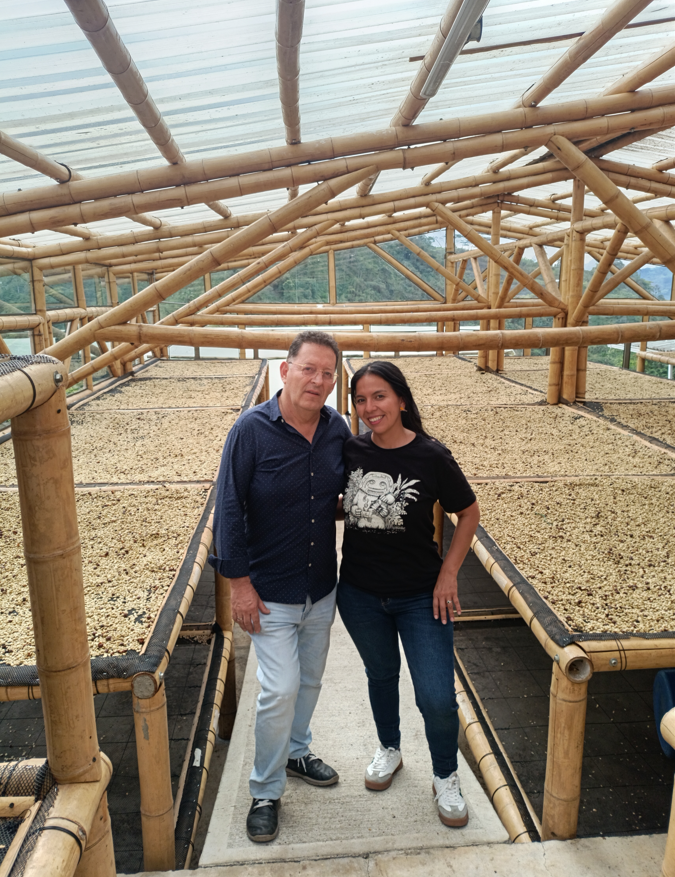
From Harvest to Cupping
We toured the plantations, perfectly organized and divided by variety. Since it was harvest season, I had the chance to see the trees heavy with fruit and to taste the cherries directly from the branches, experiencing the characteristic sweetness of these fruits at their peak ripeness.


The visit to our friends at El Renacer concluded in the best possible way: sharing a cup of coffee, strengthening business ties, and discussing a future that promises to be full of success.

Thus ends my trip and this remarkable experience in the region with the richest coffee tradition in Colombia.

